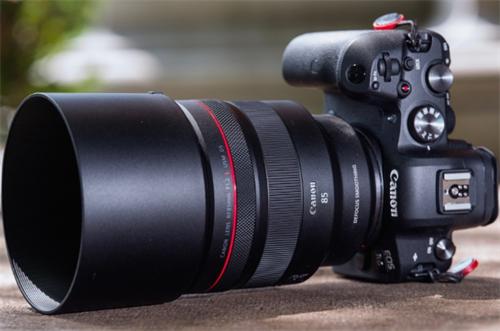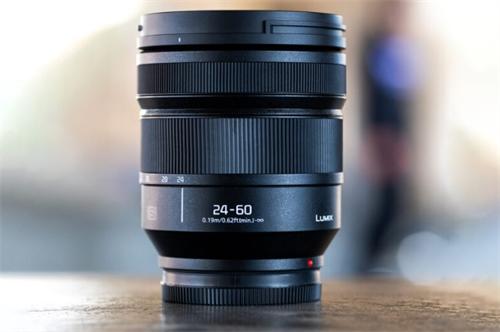Canon RF Lens Duo: The F1.2 Second-Generation Evolution and a Deep Dive into Ultra-Wide-Angle Charm

Canon is discreetly working on a new lineup of RF-mount F1.2 prime lenses, with development centered on two timeless focal lengths: 35mm and 50mm. The most eye-catching upgrade is a 15% reduction in weight — a major benefit for professional photographers who shoot handheld for extended periods.
As the "crown jewel of Canon optics," the current RF50mm F1.2 L USM is renowned for its superb image quality. However, its hefty 950g weight has long been a love-hate issue for users. The upcoming version is expected to achieve significant slimming through the use of aerospace-grade magnesium alloy barrels and an optimized optical structure, while maintaining — or even improving — its optical performance. Interestingly, Canon seems to be drawing inspiration from the popular RF35mm F1.4 L VCM, possibly incorporating more video-friendly features into the new F1.2 lenses, such as a physical aperture ring and enhanced focus breathing control.
An optical engineer revealed: "The focus of this new F1.2 generation is resolution at wide open apertures. We’ve adopted a new combination of high-refractive-index lens elements, which boosts edge sharpness by around 20% compared to the current version, all while maintaining the F1.2 maximum aperture." This will be especially beneficial for commercial portrait photographers who often shoot in low light at maximum aperture.
The Art of Ultra-Wide: A Hands-On Review of the RF15-35mm F2.8 L IS USM
Switching to the world of ultra-wide angles, I had the chance to thoroughly test the Canon RF15-35mm F2.8 L IS USM — the wide-angle powerhouse of Canon’s “Holy Trinity” — over the Spring Festival. Despite 15 years of experience in photography, this was my first time using a Canon system, and the experience far exceeded expectations.
The 15mm ultra-wide perspective delivers unforgettable visual impact. When shooting cityscapes, it easily captures entire skylines. For astrophotography, the constant F2.8 aperture offers a clear advantage over common F4 ultra-wides — allowing a full stop lower ISO and noticeably cleaner image quality. I was particularly impressed by its close-range performance: a minimum focusing distance of 0.28 meters combined with the F2.8 aperture creates a unique blend of exaggerated perspective and moderate background blur, unique to ultra-wide lenses.
The image stabilization is nothing short of astonishing. Canon’s claim of 8 stops of stabilization sounds ambitious, but when I managed a sharp handheld 4-second exposure at night, I was thoroughly convinced. For landscape photographers like me who often hike into remote areas, this stability means we can sometimes leave the tripod behind.
Technical Breakdown: Optical Innovation in the Mirrorless Era
To truly appreciate these lenses' excellence, one must understand the design differences between EF and RF mounts. Mirrorless cameras do away with the mirror mechanism, enabling lens elements at the rear to be positioned closer to the image sensor. This results in two major benefits: significantly improved edge-to-edge image quality and more compact lens designs. The RF15-35mm, for instance, includes image stabilization yet remains comparable in size to the DSLR-era EF16-35mm III — a testament to this innovation.
In terms of autofocus, the NANO USM motor is exceptionally quiet, making it ideal for shooting in environments like meetings or theaters. Paired with the EOS R6’s animal eye-tracking autofocus, it easily locks onto fast-moving pets. I once used this setup to capture street cats — at 35mm F2.8, the background blur was soft and natural, and the autofocus was both fast and precise.
Real-World Creativity: From the Stars to the Streets
In practical use, these two lens types show distinctly different personalities. The F1.2 primes are masters of low light and background blur, while the RF15-35mm excels at capturing expansive scenes. Yet both break creative boundaries in surprising ways.
Astrophotography is one of the ultimate tests for ultra-wide lenses.At 15mm, the RF15-35mm excels in controlling coma — stars near the edges remain sharp, with very little of the typical "tadpole"-like distortion. Paired with the EOS R6’s impressive high-ISO capabilities, I was able to capture detailed shots of the Milky Way at ISO 3200, with noise kept nicely in check.
In contrast, 35mm excels in street and documentary photography. Its moderate perspective and F2.8 shallow depth of field help isolate subjects while retaining environmental context. I especially enjoy using it to shoot inside cafés, where it delivers a cozy atmosphere with enough spatial depth and pleasant background blur.
Buying Advice
For photographers building their Canon RF system, my advice is clear: if your focus is portrait or documentary work, it’s well worth waiting for the new F1.2 primes. If you’re into landscapes or architecture, the RF15-35mm should be your top choice. Also worth noting: Canon appears to be pursuing a "dual-line strategy" — USM lenses emphasize still photography, while VCM lenses are optimized for video.
Recommended for you:








